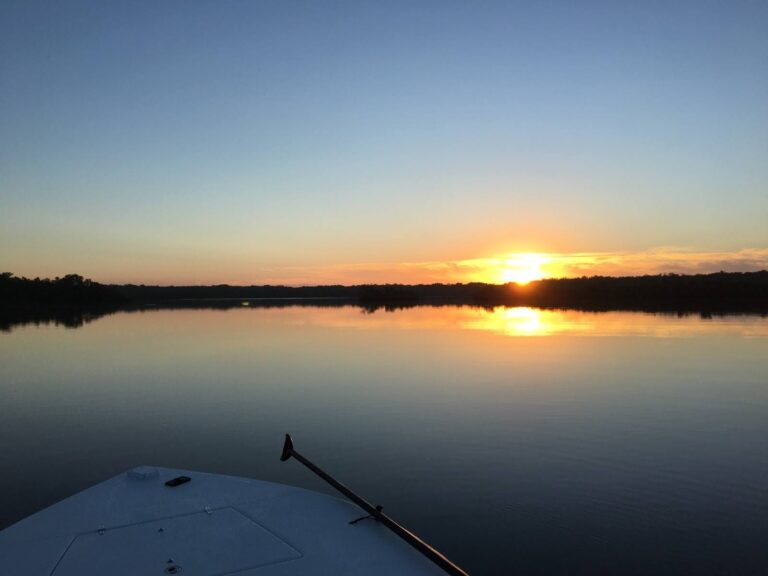How To Catch Tripletail Fishing on Crab Pots
Tripletail fishing is a thrilling experience for any angler.
These elusive fish are known for their unique appearance, acrobatic jumps, and strong fighting spirit.
One of the most effective and exciting ways to catch tripletail is by fishing around crab pots.
This guide will take you through everything you need to know about tripletail fishing on crab pots, from understanding the fish’s behavior to the best techniques and gear to use.
So grab your rod, and let’s dive into the world of tripletail fishing!
Understanding Tripletail Behavior
What Are Tripletail?
Tripletail (Lobotes surinamensis) is a fascinating species found in warm coastal waters around the world.

They get their name from their unique fin structure, which gives the appearance of having three tails.
Tripletail is highly sought after by anglers due to its delicious, firm white meat and its challenging fight when hooked.
Habitat and Behavior
Tripletail are often found near floating objects such as buoys, pilings, and, of course, crab pots.
They use these structures for shelter and hunting grounds, lying on their sides to blend in with debris and ambush prey.
Their behavior makes crab pots an ideal spot to target these fish.
Why Crab Pots?
The Attraction of Crab Pots
Crab pots attract a variety of marine life, including baitfish and crabs, which in turn attract larger predators like tripletail.
The pots provide a structure for the tripletail to hide and ambush prey, making them a hotspot for fishing.
Identifying Productive Crab Pots
Not all crab pots are created equal. Look for pots with visible fish activity, such as baitfish swimming around them.
Pots that have been in the water longer tend to attract more marine life, increasing your chances of encountering tripletail.
Gear and Tackle for Tripletail Fishing
Rod and Reel
When targeting tripletail, a medium-heavy spinning rod paired with a quality spinning reel is ideal.
Look for a reel with a smooth drag system and a strong line capacity, as tripletail are known for their strong runs and aerial acrobatics.
Line and Leader
A braided line with a 12-20 pound test is recommended for its strength and sensitivity.
Use a fluorocarbon leader of 20-30 pounds to provide abrasion resistance and improve your presentation, as tripletail can be line-shy.
Hooks and Bait
Circle hooks in sizes 2/0 to 4/0 are effective for tripletail fishing.
They provide a good hook set and are less likely to cause harm to the fish if you practice catch and release.
For bait, live shrimp, small crabs, or baitfish such as pilchards and threadfin herring are excellent choices.
It’s important to consider matching the hatch as well.
Techniques for Tripletail Fishing on Crab Pots
Sight Fishing
One of the most exciting methods of tripletail fishing is sight fishing.
Cruise slowly around crab pots, keeping an eye out for the distinctive shape of a tripletail lying on its side near the surface.
Polarized sunglasses are essential for reducing glare and spotting fish.
Approach and Cast
Once you spot a tripletail, approach quietly to avoid spooking it. Position your boat upwind or upcurrent to make casting easier.
Cast your bait just past the fish and retrieve it slowly, letting it drift naturally with the current.
A well-presented bait is often irresistible to a hungry tripletail.
Float Fishing
Float fishing is another effective technique, especially when tripletail are deeper or less visible.
Attach a float above your bait to keep it suspended at the desired depth.
This method allows you to cover more water and keeps your bait in the strike zone longer.
Setting Up the Rig
To set up a float rig, attach a slip float above your leader, adjusting the stopper knot to the desired depth.
Use enough weight to keep your bait down but not so much that it sinks the float.
Cast near the crab pots and let the float drift naturally with the current.
Drifting and Trolling
Drifting and trolling are great ways to cover a larger area when searching for tripletail.
Use a drift sock or trolling motor to control your speed and direction.
Cast your bait near crab pots and let it drift naturally, or troll slowly past the pots to entice a strike.
Tips for Success
- Vary Your Speed: Adjust your drift or trolling speed to find the most effective presentation.
- Change Baits: If you’re not getting bites, switch to a different bait or try varying your presentation.
- Stay Alert: Tripletail can strike suddenly, so always be ready to set the hook.

Best Times and Conditions for Tripletail Fishing
Seasonal Patterns
Tripletail can be caught year-round, but the best time to target them is during the warmer months, typically from late spring through early fall.
During this time, they are more active and more likely to be found near the surface around crab pots.
Tide and Weather
Tide and weather conditions play a significant role in tripletail fishing.
Moving water is key, as it brings baitfish and other prey to the crab pots.
Look for incoming or outgoing tides, which create current and attract tripletail.
Calm, sunny days are ideal for sight fishing, while overcast conditions may require more patience and different techniques.
Handling and Releasing Tripletail
Landing the Fish
Once you’ve hooked a tripletail, be prepared for a strong fight.
Keep steady pressure on the fish and avoid slack in the line.
Use a landing net to bring the fish aboard, as they have sharp gill plates and spines that can cause injury.
Handling Tips
Handle tripletail carefully to avoid injury to yourself, they have very sharp gill plates and some hidden spines as well.
Wet your hands before touching the fish to protect its slime coat.
Use pliers to remove the hook and minimize handling time.
Cooking and Enjoying Tripletail
Cleaning and Filleting
Tripletail is known for its firm, white flesh, which is perfect for a variety of culinary preparations.
To clean a tripletail, start by making a cut behind the gills and down the backbone.
Remove the fillets by cutting along the ribcage and skinning them.
Cooking Methods
Tripletail is versatile and can be prepared in many ways. Here are a few favorite recipes:
Grilled Tripletail
Ingredients:
- Tripletail fillets
- Olive oil
- Lemon juice
- Salt and pepper
- Fresh herbs (such as parsley or thyme)
Instructions:
- Brush the fillets with olive oil and lemon juice.
- Season with salt, pepper, and fresh herbs.
- Grill over medium-high heat for 4-5 minutes per side, until the fish flakes easily with a fork.
Pan-Seared Tripletail
Ingredients:
- Tripletail fillets
- Butter
- Garlic
- Lemon juice
- Salt and pepper
Instructions:
- Heat butter in a skillet over medium-high heat.
- Add garlic and cook until fragrant.
- Season the fillets with salt and pepper, then sear for 3-4 minutes per side, until golden brown.
- Finish with a squeeze of lemon juice before serving.
Baked Tripletail
Ingredients:
- Tripletail fillets
- Olive oil
- Breadcrumbs
- Parmesan cheese
- Fresh herbs (such as basil or oregano)
- Salt and pepper
Instructions:
- Preheat the oven to 375°F (190°C).
- Brush the fillets with olive oil and season with salt and pepper.
- Mix breadcrumbs, Parmesan cheese, and fresh herbs, then sprinkle over the fillets.
- Bake for 15-20 minutes, until the fish is cooked all the way through and the topping is golden brown.
Conclusion
Tripletail fishing on crab pots is an exciting and rewarding experience that combines the thrill of the hunt with the satisfaction of a delicious catch.
By understanding tripletail behavior, using the right gear and techniques, and practicing responsible fishing, you can enjoy this unique angling adventure while contributing to the conservation of these incredible fish.
Tight lines, and may your tripletail adventures be filled with excitement and success!


